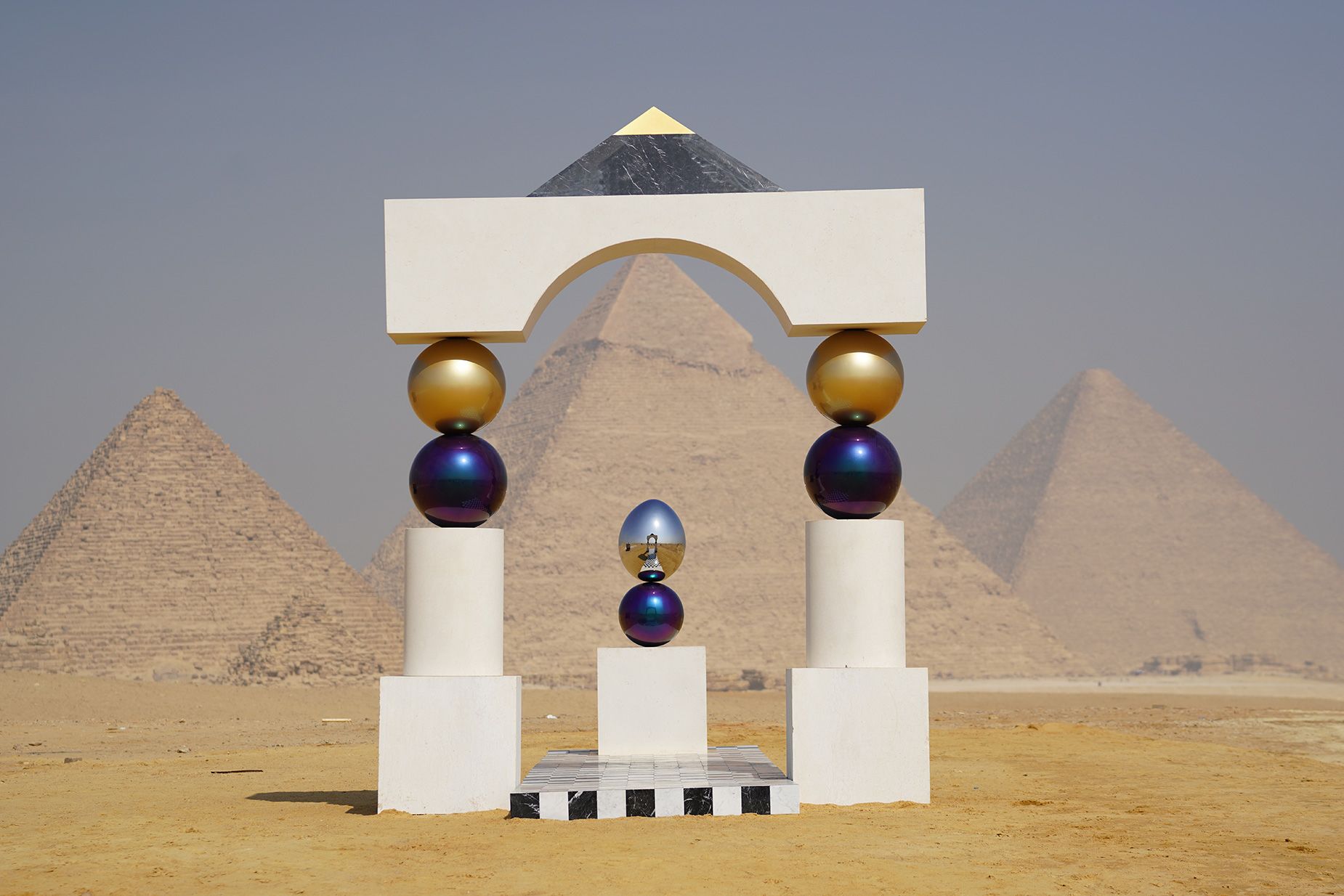On the plateau overlooking the ancient Pyramids of Giza in Egypt, a major outdoor art exhibition brings together the work of 14 international contemporary artists who have created site-specific installations responding to the iconic monuments. In one project, a new pyramid structure emerges in wicker; in another, glass sculptures appear to make the ancient pyramids float on water.
“Forever Is Now III” (on until 18 November) is the third edition of an annual exhibition held at the site, and the biggest yet. Organized by Nadine Abdel Ghaffar, the founder and curator of Cairo-based arts firm Art D’égypte, the event aims to celebrate ancient Egyptian culture through contemporary creativity.
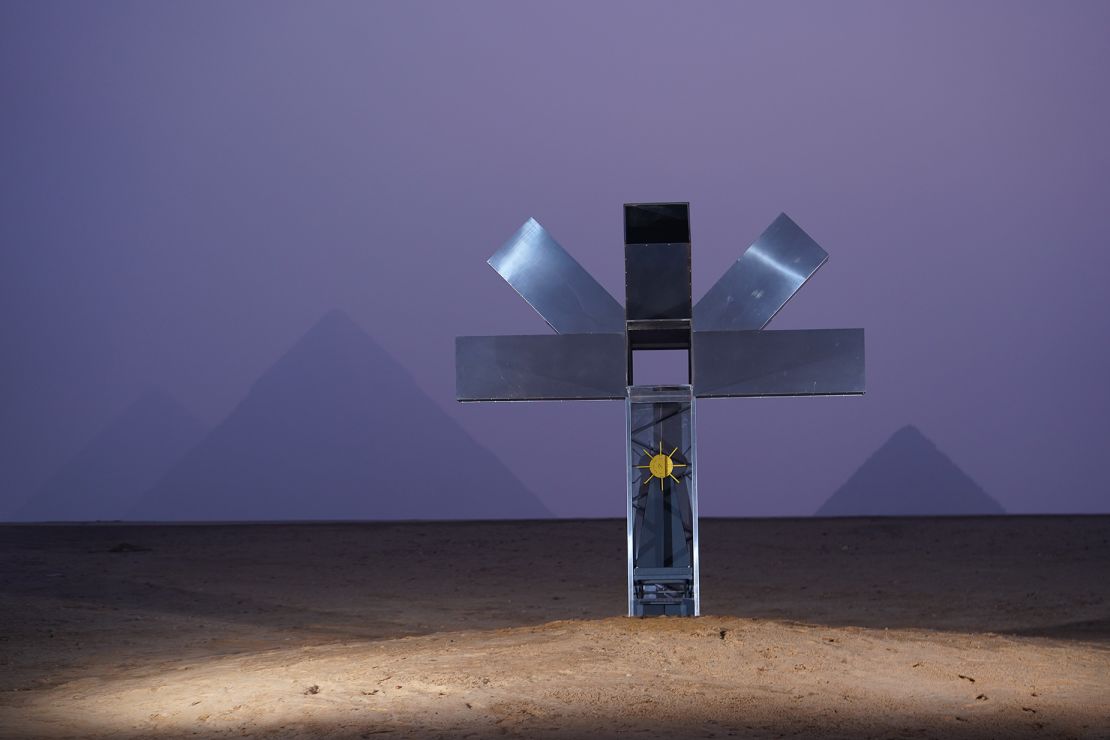
“Every year we have an amazing group of artists that are in dialogue with this civilization,” said Ghaffar over video call from Cairo. Art D’égypte works with UNESCO to ensure the exhibition leaves the 4500-year-old world heritage site completely unharmed. (A 50cm layer of imported sand is used to place the artworks on, so they don’t even touch the ground.) The works this year engage with the fertile territory of concepts presented by the pyramids, from mythology and spirituality to technical innovation and architecture.
Mexico City-based Argentinian artist Pilar Zeta has created “Mirror Gate”, a limestone portal decorated with gold and iridescent blue spheres and topped by a pyramidal apex, under which lies a checkerboard pathway leading to a mirrored egg on a plinth. “I’ve always been fascinated by the Pyramids of Giza and the entire ancient Egyptian culture — the mysticism around it, the enigmas,” Zeta said. “The pyramids are the most sacred sculptures on?planet Earth in my opinion.”
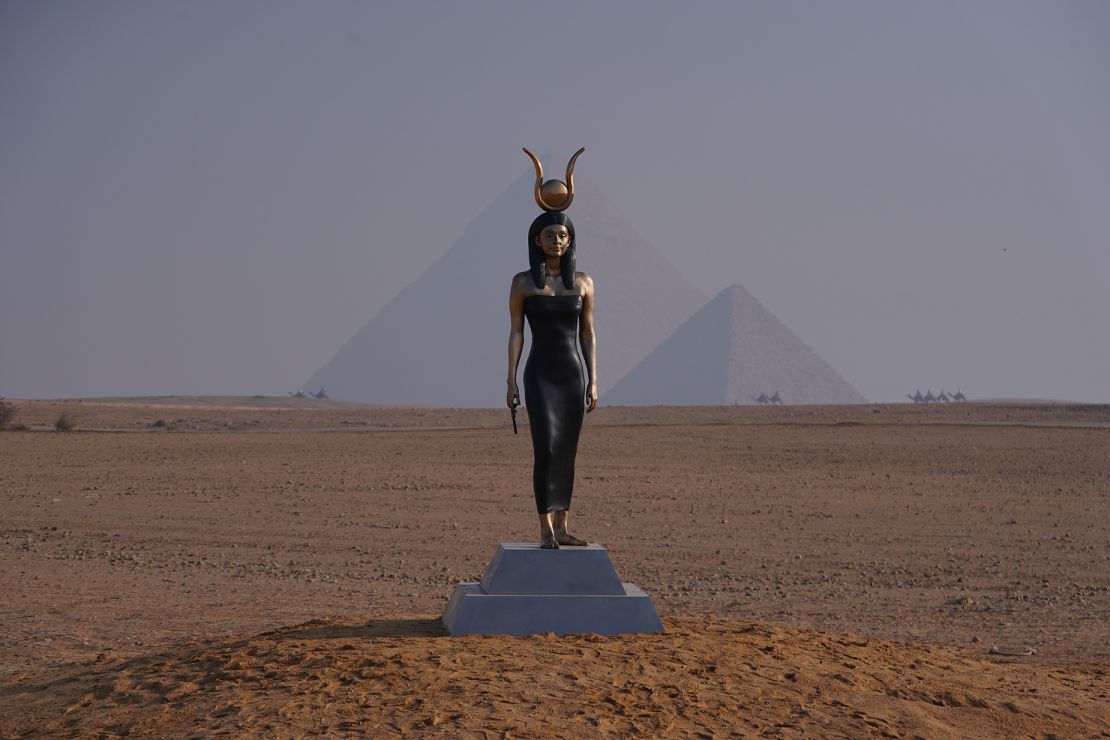
Zeta’s installation, which appears like a surrealist painting and postmodernist film set in one, is rich in layered meaning. The portal represents connections across time, the iridescent blue references the scarab beetle that symbolizes rebirth and regeneration, and the mirrored egg represents the cosmic egg in Egyptian mythology that denotes creation. The artist’s use of materials aims to blend the ancient and modern, with natural limestone reflecting the pyramids’ construction, and painted metal nodding to “our post-industrial society”.
Materials with meaning
A symbolic use of material was also important for Dutch artist-designer Sabine Marcelis, who adopted glass for her sculpture “RA”, a sundial structure named after the ancient Egyptian sun god. “Egypt being the birthplace of both the sundial and glass as material, I wanted to pay homage to those incredible inventions,” Marcelis explained over email. “Even the pyramids themselves were a form of sundial.”
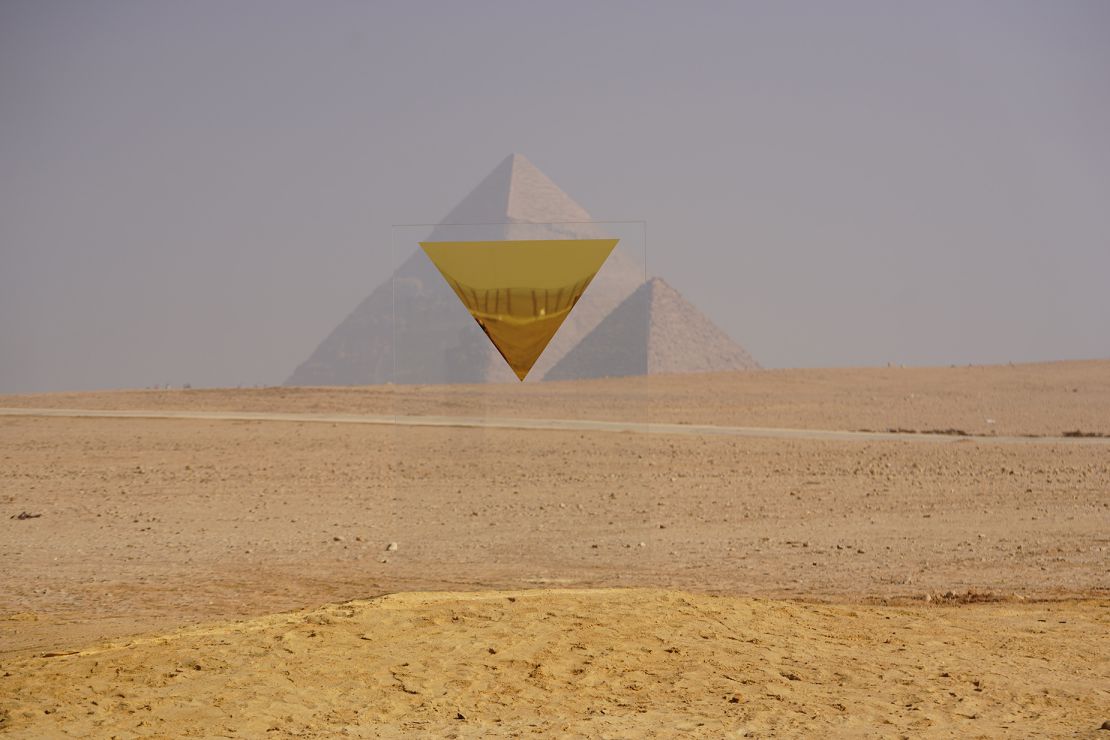
While the tall rectilinear sculpture casts moving shadows across the sand during the day, at night a special technology embedded within the glass transforms the installation into a source of light. “There are solar cells sandwiched between the glass which harness the power of the sun to charge a battery inside the artwork,” said Marcelis. “This means that the artwork can exist as a completely off-grid installation and powers its own lighting at night.”
Glass also plays a key role in “Horizon” by Greek sculptor Costas Varotsos, a series of metal circles half-filled with glass and arranged in a line. By making it appear as if the pyramids are sitting on water, the work emphasizes the relationship between the monuments and the Nile river on the horizon behind.
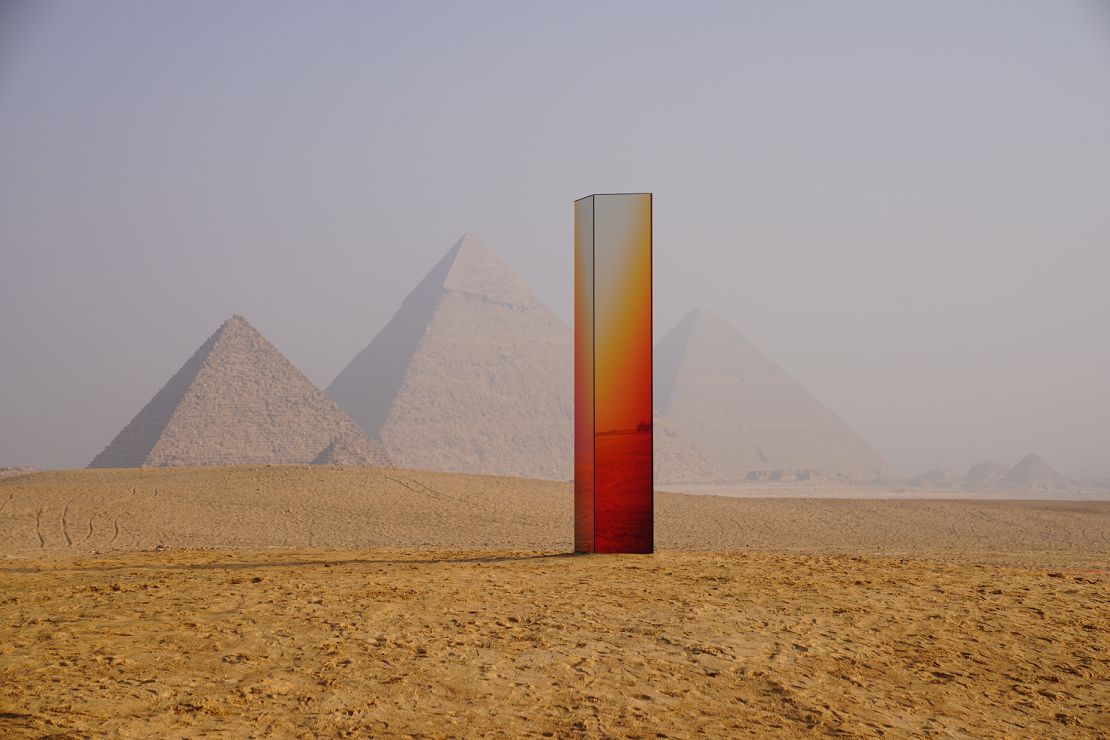
“Translucent Pyramid” by Saudi artist Rashed Al-Shashai, adds a new, 6m-tall pyramid to the plateau. Constructed out of wicker crates, the work references the traditional craft of wicker weaving in Egypt and advocates sustainable and heritage-based practices for contemporary design.
Another architectural installation, “The Ghost Temple”, has been designed by Egyptian-born British sculptor Sam Shendi. Created from geometric steel forms in red, the work imagines the remnants of an ancient temple. It appears as a portal to walk through, and celebrates the art of architecture and geometry that made the pyramids possible.
“Treasures”, a steel sculpture by Emirati jewelry artist Azza Al Qubaisi, also invites visitors to walk through it. Its rippling and undulating form takes inspiration from the patterns of the surrounding desert landscape, leading to a central pyramid structure, topped by a golden apex.
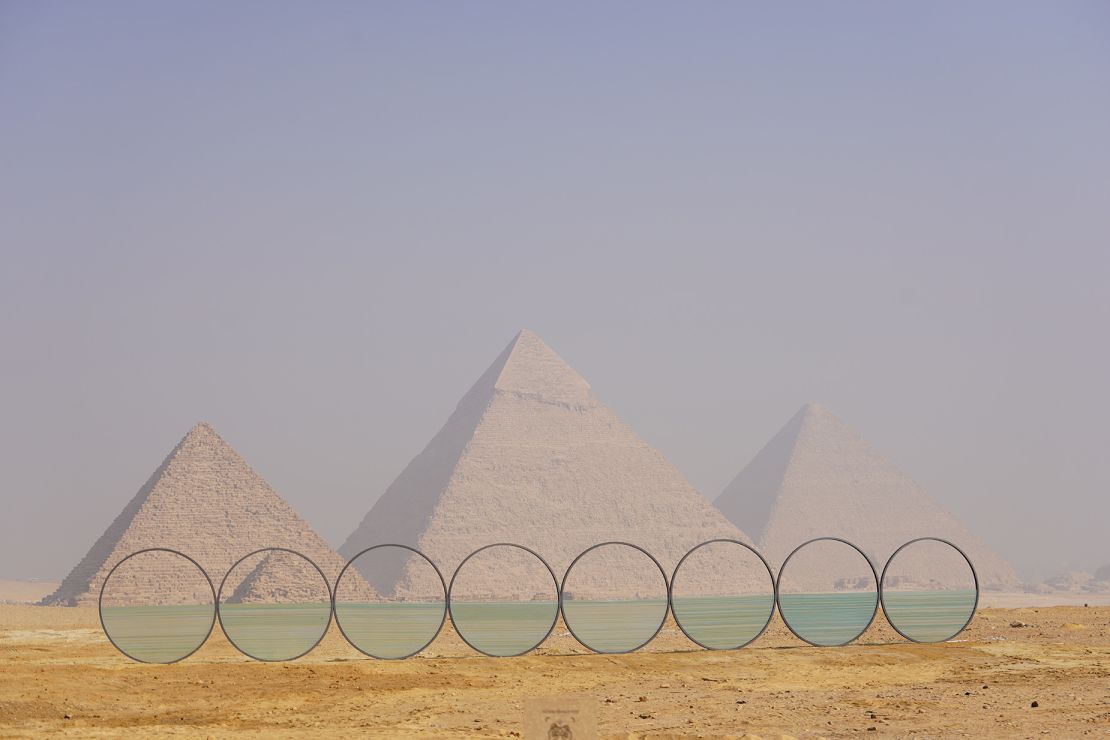
Rashid Al Khalifa, an artist and member of the Bahraini royal family, has created “Reality is Timeless”, a series of copper and brass structures emerging from the ground at varying angles. Conceived as seemingly archaeological fragments of a labyrinth, each one is decorated with perforated motifs taken from historic diagrams of the ancient Egyptian labyrinth.
Meanwhile, “Inside Out Giza” by French photographer JR continues a project he started in the 2022 edition of Forever is Now. Having previously installed a photo booth on site for visitors to have their picture taken, JR this year showcases a selection of those large-scale portraits in black and white, laid out on the plateau in front of the pyramids.
Reflecting on the exhibition, Ghaffar, the curator, explained that she sees the ancient pyramid complex as “a token of hope to humanity.” It has “withstood so many things,” she said — from wars to pandemics — “and it’s still there, and still has secrets, so there’s hope.” That hope, she added, has to be shared with everyone – and this unique art exhibition aims to do just that.
